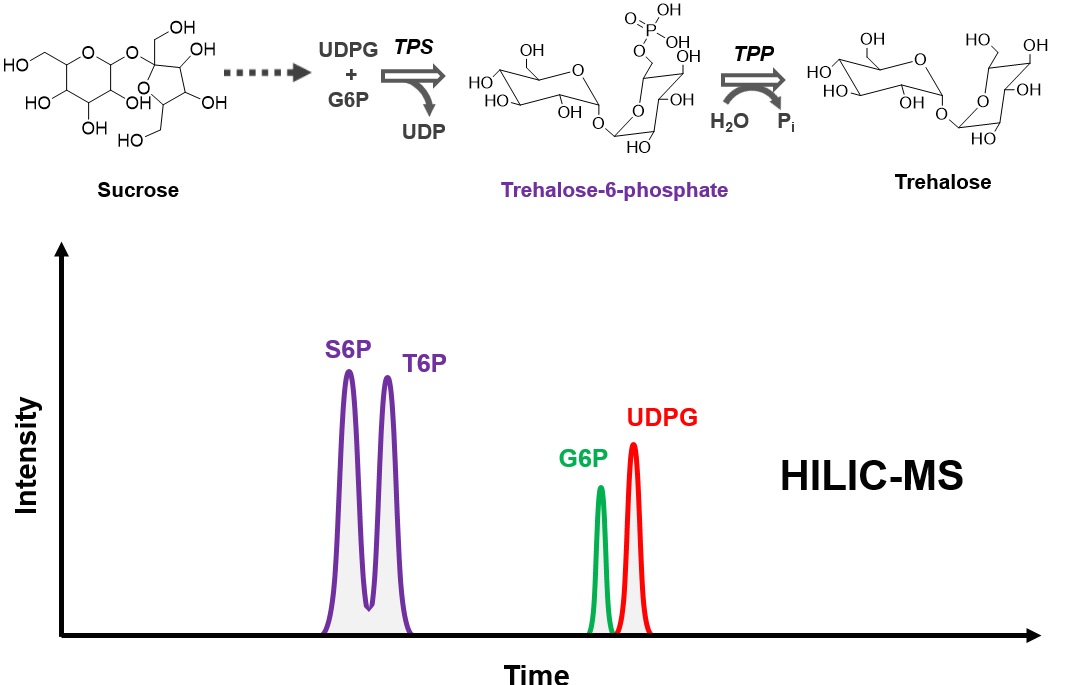Sugar rush
Oeiras, 22.12.2016
Trehalose-6-phosphate (T6P) is an important signaling metabolite, involved in the control of plant growth and the response to stress conditions. However, the almost undetectable levels of T6P together with the complex plant matrix and the presence of T6P isomers makes the detection of this metabolite challenging. In order to better understand its role we need better tools to detect and quantify this metabolite.
Researchers from ITQB NOVA's Carla António Lab and Pedro Fevereiro Lab, in collaboration with Maria do Rosário Bronze of the Portuguese Mass Spectrometry Network (RNEM) at the Faculty of Pharmacy University of Lisbon (FFUL), have developed a highly sensitive and reliable method to measure T6P in plant tissues, using Liquid Chromatography and Mass Spectrometry. The results were published last week in Journal of Chromatography A.
The newly developed method used the model legume Medicago truncatula subjected to water deficit as proof of concept. Researchers were able to detect and quantify for the first time T6P present in the picomole range in M. truncatula roots and leaves.
This new analytical tool is fully validated and can now be used to quantify low-abundant T6P in other biological systems to better understand the regulation of this signaling metabolite.
This work represents a significant advance in the separation sciences field and increases the range of sensitive analytical methodologies to measure T6P in complex plant matrices.

Original article
Journal of Chromatography A, 1477, 16 December 2016, Pages 30–38 http://dx.doi.org/10.1016/j.chroma.2016.11.031
Ana Teresa Mata, Tiago Filipe Jorge, João Ferreira, Maria do Rosário Bronze, Diana Branco, Pedro Fevereiro, Susana Araújo, Carla António







